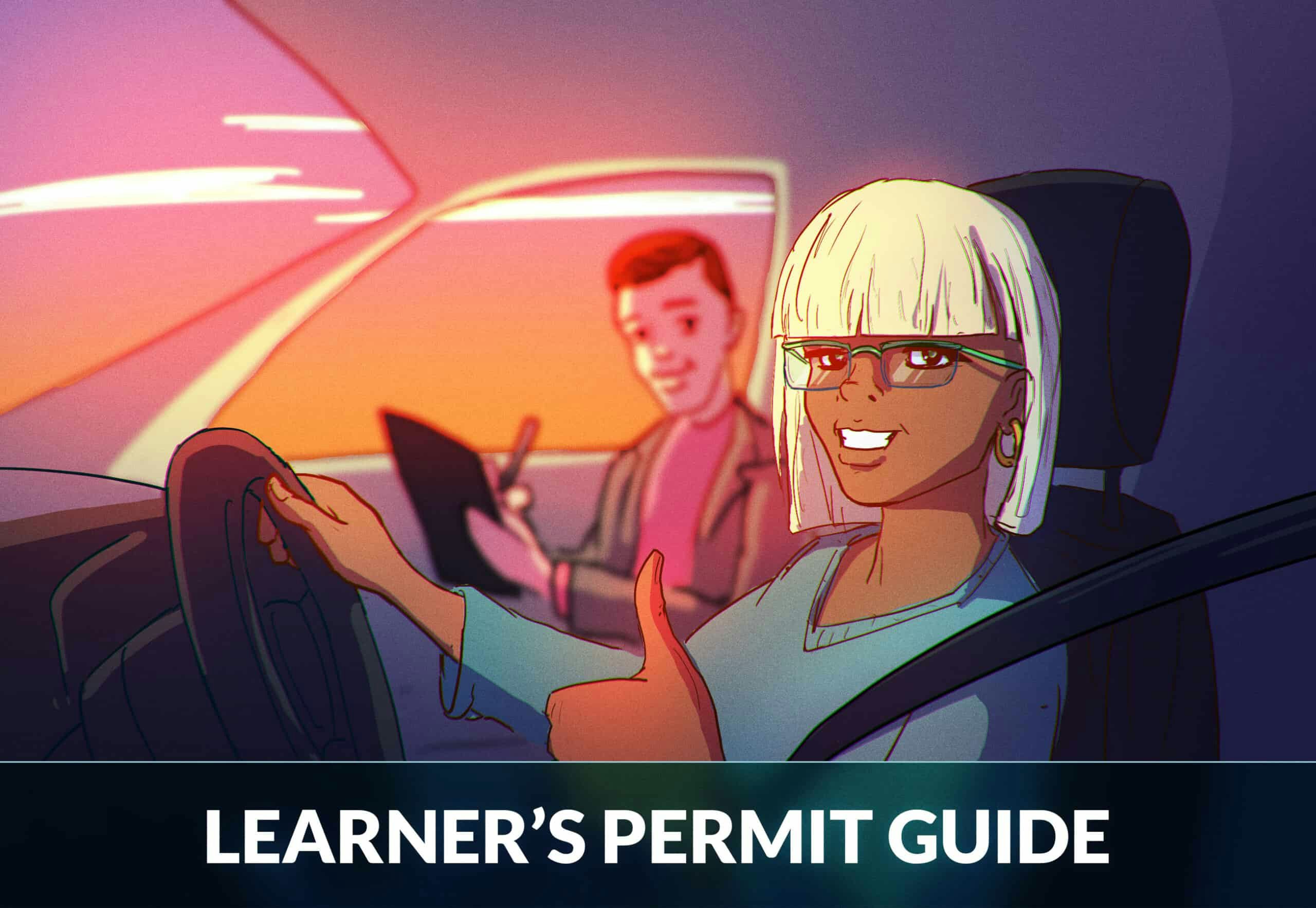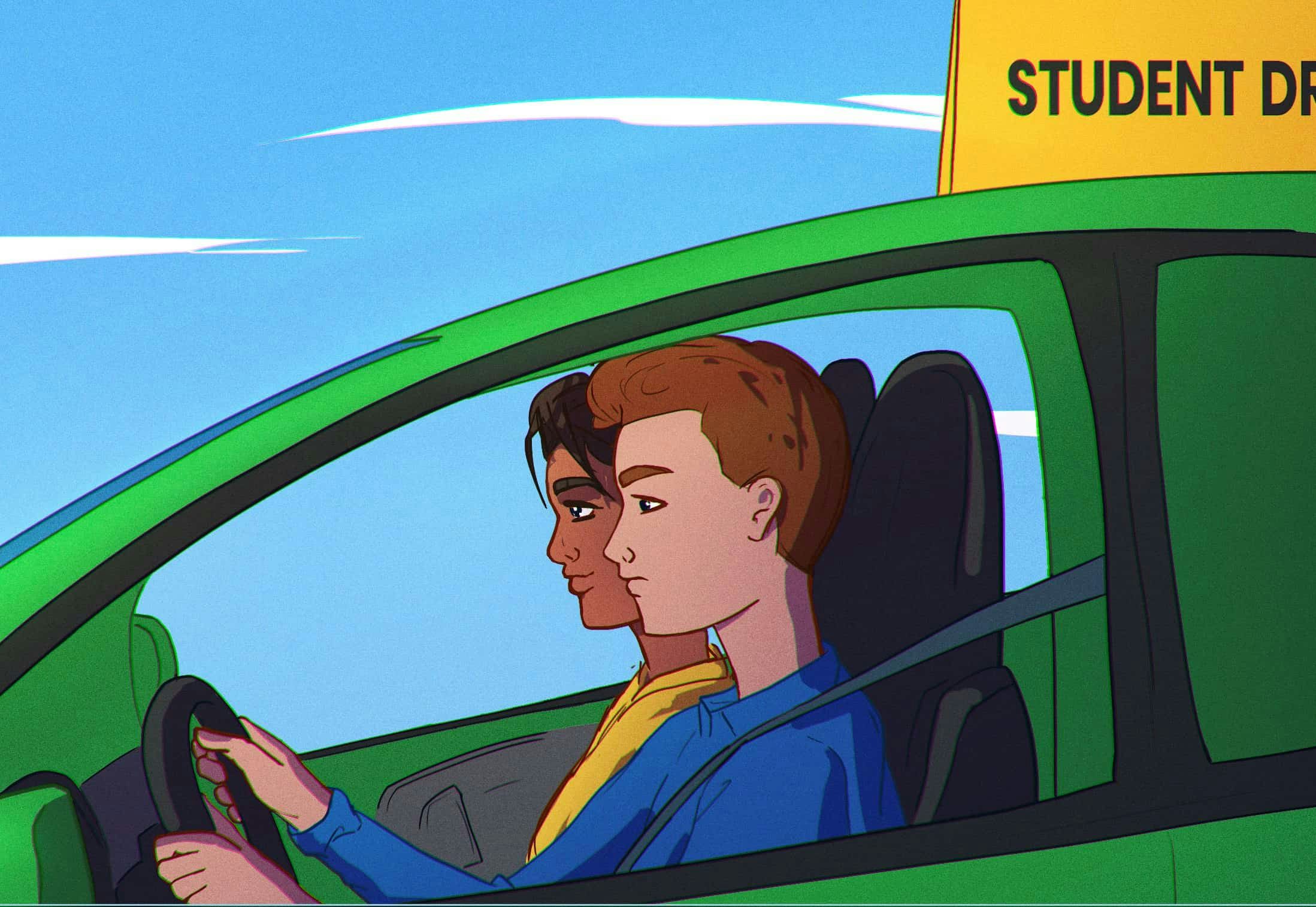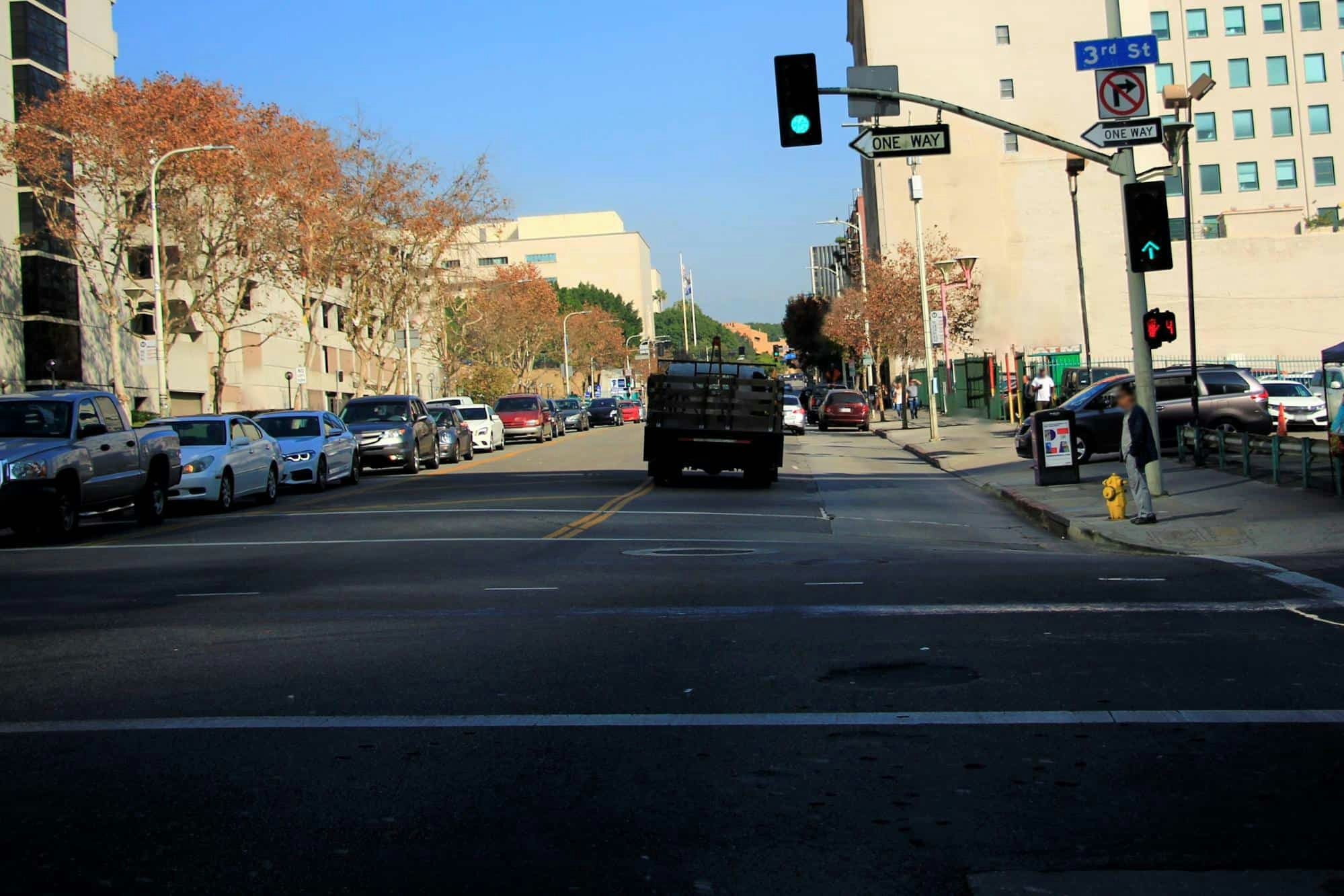
Learner’s Permit: 2025 Definitive Guide
Before you can apply for a driver’s license, you must first get your DMV learner’s permit. While some states allow adults to bypass this step, teen drivers under the age of 18 are always mandated to follow these requirements. A permit allows you to practice driving behind the wheel with a licensed driver.
In this guide, we’ll explain the key steps you need to know to get your learner’s permit.
What is a Learner’s Permit?
Minors are not allowed to legally drive in the United States without obtaining a learner’s permit – often called a driver’s permit, learner’s license, or instruction permit. It is the first step towards receiving your full, unrestricted driver’s license in your state of residence.

A permit will allow you to drive a vehicle under certain restrictions for the duration of your learning period while getting used to dealing with different traffic hazards and situations. Your restrictions will also depend on your state. They include terms such as restraints on late-night driving, the number of passengers in your vehicle, and who those passengers are. There are also limits on where you can drive, placing emphasis on high traffic and tourist areas.
Do You Need a Learner’s Permit?
Yes, most likely. In most states, the permit is mandatory for new drivers under 18 years old. However, all new drivers, regardless of age, should consider completing the learner’s permit process to gain a full understanding of how to operate a motor vehicle safely in their state. This not only protects you but the thousands of other drivers you’ll pass while driving throughout your lifetime.

The permit was created to nurture a safe driving environment for all drivers on the road. You will learn how to operate a motor vehicle safely while becoming acclimated with traffic rules and regulations for your state. The process also helps you gain comfortability behind the wheel, as many states require a minimum amount of driving hours for all students. Use this period as a learning experience to help you become the safest driver possible when your permit restrictions are lifted.
Each State’s Age Requirements
The age at which you can apply for a permit depends on your state. All states allow adults over the age of 18 to obtain a permit. Consult the table below to identify the age at which your state allows minors to apply or select your state and see all specific requirements here.
| State | Driver’s Permit Age |
|---|---|
| Alabama | 15 |
| Alaska | 14 |
| Arizona | 15 ½ |
| Arkansas | 14 |
| California | 15 ½ |
| Colorado | 15 |
| Connecticut | 16 |
| Delaware | 16 |
| District of Columbia | 16 |
| Florida | 15 |
| Georgia | 15 |
| Hawaii | 15 ½ |
| Idaho | 14 ½ |
| Illinois | 15 |
| Indiana | 15 |
| Iowa | 14 |
| Kansas | 14 |
| Kentucky | 16 |
| Louisiana | 15 |
| Maine | 15 |
| Maryland | 15 ¾ |
| Massachusetts | 16 |
| Michigan | 14 ¾ |
| Minnesota | 15 |
| Mississippi | 15 |
| Missouri | 15 |
| Montana | 14 ½ |
| Nebraska | 15 |
| Nevada | 15 ½ |
| New Hampshire | 15 ½ |
| New Jersey | 16 |
| New Mexico | 15 |
| New York | 16 |
| North Carolina | 15 |
| North Dakota | 14 |
| Ohio | 15 ½ |
| Oklahoma | 15 ½ |
| Oregon | 15 |
| Pennsylvania | 16 |
| Rhode Island | 16 |
| South Carolina | 15 |
| South Dakota | 14 |
| Tennessee | 15 |
| Texas | 15 |
| Utah | 15 |
| Vermont | 15 |
| Virginia | 15 ½ |
| Washington | 15 |
| West Virginia | 15 |
| Wisconsin | 15 ½ |
| Wyoming | 15 |
How to Apply
1. Present Approved DMV Documents
The Department of Motor Vehicles keeps a running record of every driver on the road, starting from when they receive their permit as a teenager. When beginning this process for the first time, your state’s DMV will ask you for several documents to prove your identity, as well as your legal and residential status within the United States.
It is important to remember to bring these documents with you when applying for a driver’s permit, or you risk being denied on the spot. We have you covered with the list of documents you need to bring with you. As always, this list may vary slightly from state to state, so be sure to check in with your local DMV to ensure you have everything you need.
- Proof of identity
- Social security number
- Proof of state residency
- Proof of United States citizenship or legal presence
2. Pass the Written Test
This exam is designed to test your basic understanding of road rules and traffic laws. The number of questions will vary depending on the state you live in. Select your state and practice for your permit test here.
3. Pass the Vision Screening
The vision test is designed to test your visual acuity as it relates to your ability to safely operate a motor vehicle. It occurs after the learner’s permit test is completed. In most states, vision levels of 20/40 are considered standard for drivers. Those who do not meet these requirements will need to purchase corrective lenses before being issued a permit.
Consult with your local optometrist to determine the type of lenses and frame that work best for your situation. Corrective contact lenses are also a popular option for drivers.
4. Pay the Permit Fee and Get Your Permit
Some states charge as little as $40 for the permit application fee, while some assess a fee of $55 or more.
The DMV Permit Test
Studying for the permit test is one of the most important aspects of the process. The permit test is full of road signs and rules that every driver must know when operating a motor vehicle. Prepare using the following methods:
- Take permit practice tests
- Study your DMV handbook
- Use online resources designed to help you prepare effectively, such as Zutobi
While taking the exam, you’ll want to make sure you read each question fully and answer to the best of your ability. Remember that there is no award for first place, so it is in your best interest to take your time and utilize the full period allotted to you.

How Many Questions are on the Test?
This varies by state, but the average range is generally between 25 and 50 questions. Many states require a passing score as low as 70%, while other states require a passing score of 80% or higher.
What if You Fail the Permit Test?
If you’ve failed the test, there’s no reason to worry. In most states, you can retake the exam up to three times before having to restart the entire driving permit process. The test retake can occur as early as the next day, however, there is no need to rush into it. Be sure to study hard before redoing your exam to ensure the best chance of success moving forward.
What Happens After the Test?
If you’ve passed your test – congratulations! Your local DMV will issue you a temporary permit on the spot and have your permanent card mailed to you in 5-10 business days.
Learners Permit Restrictions & Requirements
You are required to abide by certain permit restrictions until you take the DMV road test and obtain a full driver’s license. Generally, you must hold your permit for six months, or up until your turn 18, before you can apply for your full driver’s license and take the road exam. This is the perfect time to get acclimated to the road and obeying traffic signs and signals.
Here is a general list of some common restrictions.
- You must keep your learner’s permit with you at all times while driving.
- You may be prohibited from driving during certain hours. This typically includes nighttime driving or driving during rush hour.
- You must not acquire any underage alcohol convictions. If you are caught offending this law, you may be subject to the loss of your driving privileges until you reach the age of 21 years of age.
- You must not acquire any moving violations. Engaging in reckless driving, distracted driving, or excessive speeding may deem you ineligible to receive your driver’s license for an extended period of time.
- You may only have one passenger under the age of 20 who is not a sibling, child, or stepchild.
- You are only allowed to utilize the permit within your state.
- You must not drive without a supervising driver.

Do You Need to Practice with a Supervised Driver?
Most state DMV’s require student drivers to keep a log of their driving to ensure they’re getting the proper amount of practice leading up to the road exam. These sessions should always be completed with a parent, legal guardian, or experienced adult driver with at least 5 years of experience. If you are over the age of 18, your state may allow you to bypass this step, however, all minors are required to complete supervised driving by law.
The number of supervised driving hours needed to progress with a learner’s permit is generally around 50 hours, including at least 10 hours at night. Regardless, you should be spending as much time as possible safely learning to operate a motor vehicle.

Do You Need to Enroll in a Driver’s Education Course?
Depending on your state, enrolling in a state-approved driver’s education course might be the next step in the driver’s permit process and required to progress to the next license in the Graduated Licensing Program (GDL). Driver’s education will teach you the intricacies of the road including traffic signs, road signals, different vehicle maneuvers, and more. Many states require between 15 and 30 hours of class time, while some demand up to 45 hours of lessons.
Driver’s education courses are generally only required for student drivers under the age of 21 years. If you are still in school, check your district’s policy on student drivers – many high schools also offer driver’s ed courses for free, or at a significant discount rate. Adult drivers over the age of 18 should check with their state government for information on licensed driver’s ed providers.
What are the Insurance Requirements with a Driver’s Permit?
All licensed drivers in the US, whether provisional or permanent, will require insurance before hitting the road. However, you don’t necessarily need your own policy. If you are still dependent on your parents, you can sign up for a policy under them. There are several different policy types providing you and your vehicle with different levels of protection in case of a crash or other accident on the road.
Comprehensive Coverage
Comprehensive coverage is exactly as it sounds – it covers any damage that may happen to your vehicle from unforeseen events such as theft, vandalism, hail, or fire. In the event of a crash, your vehicle will be covered as well. Your chosen comprehensive coverage package will come with a deductible, oftentimes between $50 to $250. The lower your deductible, the more you’ll pay for coverage every month. Comprehensive coverage includes some (or all) of the following coverage levels.
Liability Coverage
In all fifty states, automotive liability coverage is mandatory. You will have to purchase the minimum level of liability coverage (set forth by your state) to be considered legally insured and able to operate a motor vehicle. Liability coverage usually comes in two parts:
- Bodily injury liability is responsible for paying the costs related to another person’s injury if you cause an accident. Your insurance company will be responsible for these fees up to a certain amount
- Property damage liability will help pay for property damage that was caused as a result of an accident or other event while driving
Uninsured Motorist Coverage
Although required under law, many drivers fail to insure themselves and their vehicles while on the road. If you’re hit by one of these individuals, it’ll be very difficult to receive payment in order to cover your medical bills, property damage, and damage caused to your vehicle. With uninsured (and underinsured) motorist coverage, your insurance will be able to cover you in instances where the other driver’s coverage is insufficient.
Collision Coverage
Collision coverage is quite self-explanatory. If you’re involved in a vehicle collision of any sort, collision coverage is responsible for paying to repair or replace your car, up to its market value. Whether you’re involved in an incident with another vehicle, or responsible for a collision with a light pole or fence, your vehicle will be covered under this coverage level.
Medical Payments Coverage
Medical payments coverage is responsible for exactly what it sounds like – covering medical payments. If you or your passengers are injured in an accident, your medical payments may be covered under medical payments coverage. Expenses such as surgery, X-rays, MRI’s, and rehab all may be covered through medical payments coverage.
Personal Injury Protection
Personal injury protection is only available to drivers of certain states, but is very similar to medical payments coverage. If you’re involved in an accident, personal injury protection will help you cover medical expenses as well as expenses incurred as a result of your injury, such as lost wages, child care, etc.
When Will Your Driver’s Permit Expire?
A driver’s license is generally valid for 2-4 years, depending on the state you live in. The expiration date of your permit will be clearly labeled on the identification card. Although you are able to carry your permit for 4 years in some states, you will want to apply for a driver’s license as soon as possible to lift the many restrictions associated with a driving permit.

550+ exam-like questions
All you need to ace your test
Perfect for first-timers, renewals and senior citizens
Recommended articles
Ace your DMV test, guaranteed
Want to Be the Top School in Your Area?
- Simple & automated admin
- More time for teaching
- #1 learning materials for students


